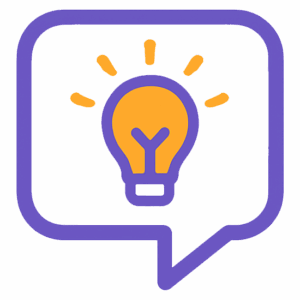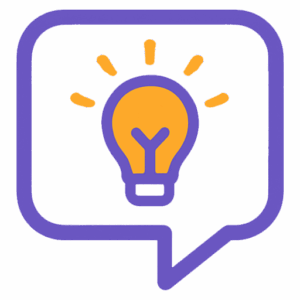Language is full of opposites. We describe things as hot or cold, big or small, light or dark, happy or sad. These opposite pairs of words help us organize our thoughts and communicate with clarity. Words that express opposite meanings are called antonyms. They are an essential part of language because they create contrast and help define meaning through difference. Understanding antonyms not only strengthens vocabulary but also deepens comprehension and expression. So, what exactly is an antonym, how do antonyms work, and why are they so important?
The Meaning of Antonym
The word antonym comes from Greek roots: anti- meaning “against” and onyma meaning “name.” An antonym, therefore, literally means “a word with an opposite name.” In simple terms, an antonym is a word that has a meaning opposite to another word in the same language.
For example:
| Word | Antonym |
|---|---|
| Hot | Cold |
| Old | Young |
| Begin | End |
| Happy | Sad |
| Empty | Full |
Antonyms give language balance. When we use opposites, we clarify meaning by comparison. For instance, we understand “tall” partly because we know what “short” means. In other words, opposites help define each other.
Why Antonyms Matter
Antonyms are fundamental to communication and thought. Without them, it would be hard to describe differences, express emotions accurately, or convey contrast in writing and speech.
Here are a few key reasons why antonyms are so important:
- Clarifying meaning: Opposites help define concepts. To explain “day,” we refer to “night.”
- Expressing contrast: Writers and speakers use antonyms to create vivid contrasts that enhance meaning.
- Improving vocabulary: Knowing antonyms helps learners understand word relationships and expand their lexicon.
- Enhancing reasoning: Thinking in terms of opposites encourages analytical thinking and comparison.
- Making communication precise: Antonyms help express exact shades of meaning, such as distinguishing between “difficult” and “easy.”
Types of Antonyms
Not all antonyms function the same way. Linguists classify them into several main categories based on how their meanings are opposed.
1. Gradable Antonyms
Gradable antonyms describe two ends of a scale, with possible degrees in between. The contrast is not absolute; rather, it allows for comparison.
For example:
- Hot ↔ Cold
- Tall ↔ Short
- Fast ↔ Slow
Between hot and cold, we can have warm, cool, or lukewarm. Similarly, someone can be quite tall or a bit short. Gradable antonyms allow us to measure or compare qualities on a spectrum.
They are often used with modifiers like very, more, quite, or less:
- Today is much colder than yesterday.
- She is taller than her brother.
Gradable antonyms are common in everyday speech because most qualities exist in degrees rather than absolutes.
2. Complementary (Binary) Antonyms
Complementary antonyms express an either/or relationship — one excludes the other. Something is one or the other; there is no middle ground.
Examples include:
- Alive ↔ Dead
- Male ↔ Female
- True ↔ False
- Present ↔ Absent
If something is alive, it cannot be dead. If a statement is true, it is not false. These opposites form logical pairs and are often used in formal or scientific contexts where precision is important.
3. Relational (Converses) Antonyms
Relational antonyms describe the same situation from opposite perspectives. The relationship between the words depends on direction, role, or point of view.
Examples include:
- Buy ↔ Sell
- Give ↔ Receive
- Parent ↔ Child
- Employer ↔ Employee
In these pairs, one action or state implies the other. If someone buys something, someone else sells it. These antonyms show how language reflects relationships between people or actions.
4. Reverse Antonyms
Reverse antonyms describe actions that undo or reverse each other.
Examples include:
- Tie ↔ Untie
- Build ↔ Demolish
- Inflate ↔ Deflate
- Enter ↔ Exit
These pairs represent movement or change in opposite directions. The prefix un- or de- often signals a reversal in meaning.
Antonyms in Everyday Life
Antonyms are everywhere — in speech, writing, education, and thought. We use them instinctively to compare, contrast, and clarify.
1. In conversation:
People naturally use opposites to explain ideas.
- “It’s not hot today; it’s cold.”
- “This task is easy, not difficult.”
2. In writing:
Writers use antonyms to add depth and rhythm.
- “It was the best of times, it was the worst of times.” (Charles Dickens)
The contrast between best and worst intensifies meaning and creates memorable imagery.
3. In education:
Teachers use antonyms to build vocabulary and comprehension skills. Learning opposites helps students connect concepts and understand new words faster.
4. In thinking:
Human thought relies heavily on contrast. We understand light because we know dark, and we recognize success by comparing it to failure. Antonyms structure our thinking about difference and change.
Antonyms and Synonyms
Antonyms and synonyms are two sides of the same coin. Synonyms are words with similar meanings, while antonyms are words with opposite meanings.
For example:
- Synonyms: happy, joyful, pleased
- Antonyms: happy ↔ sad, joyful ↔ miserable
Understanding both helps learners master language more deeply. Synonyms expand vocabulary, while antonyms refine it by showing contrast and opposition. Together, they make communication precise, expressive, and dynamic.
Antonyms in Grammar and Word Formation
Antonyms can be created in several ways. Sometimes, they are entirely different words (good/bad, up/down), but often, English forms antonyms by adding prefixes to create opposite meanings.
Common Prefixes for Antonyms:
| Prefix | Meaning | Examples |
|---|---|---|
| un- | not, opposite | happy → unhappy, kind → unkind |
| dis- | opposite of, reverse | agree → disagree, appear → disappear |
| in-/im-/il-/ir- | not | correct → incorrect, legal → illegal, possible → impossible, responsible → irresponsible |
| non- | absence of | sense → nonsense, fiction → nonfiction |
| de- | reverse action | activate → deactivate, code → decode |
These prefixes make English a flexible language, allowing speakers to form opposites quickly without needing entirely new words.
The Role of Antonyms in Language Learning
For both native speakers and language learners, antonyms are key to vocabulary growth and comprehension. They help learners organize words into meaningful relationships rather than memorizing isolated terms.
1. Building Word Networks
When learners study antonyms alongside synonyms, they create mental “word maps.” Knowing that “lazy” is the opposite of “hardworking” reinforces both meanings and helps recall them faster.
2. Improving Comprehension
Understanding antonyms improves reading skills. If a learner encounters “This task was far from simple,” they can infer the meaning of simple through its opposite — something difficult or complex.
3. Enhancing Writing and Speaking
Using antonyms helps writers and speakers emphasize contrast and variety. Instead of saying, “The movie was good,” a person might say, “The first half was exciting, but the ending was disappointing.” The contrast makes the sentence more expressive and meaningful.
4. Supporting Critical Thinking
Thinking in opposites encourages logical reasoning. Comparing contrasting ideas, such as freedom vs. control or peace vs. conflict, helps people analyze concepts deeply and communicate opinions clearly.
Examples of Antonyms in Different Categories
Antonyms appear in every area of life and knowledge. Here are examples across several categories:
Adjectives
- Big ↔ Small
- Expensive ↔ Cheap
- Honest ↔ Dishonest
- Difficult ↔ Easy
- Safe ↔ Dangerous
Verbs
- Accept ↔ Reject
- Arrive ↔ Depart
- Build ↔ Destroy
- Lend ↔ Borrow
- Win ↔ Lose
Nouns
- Friend ↔ Enemy
- Success ↔ Failure
- Truth ↔ Lie
- Beginning ↔ End
- War ↔ Peace
Adverbs
- Always ↔ Never
- Early ↔ Late
- Often ↔ Seldom
- Above ↔ Below
- Everywhere ↔ Nowhere
Antonyms and Context
It’s important to remember that antonyms depend on context. A word can have different opposites depending on how it is used.
For example:
- “Light” can mean not heavy (antonym: heavy) or not dark (antonym: dark).
- “Fast” can mean quick (antonym: slow) or firmly fixed (antonym: loose).
Therefore, antonyms are not fixed pairs but context-dependent. Understanding meaning within a sentence helps identify the correct opposite.
Antonyms in Literature and Rhetoric
Writers often use antonyms to create powerful contrasts that enhance rhythm, tension, or emotional depth. This rhetorical device, called antithesis, places opposing ideas side by side for dramatic effect.
Examples include:
- “Speech is silver, but silence is golden.”
- “To err is human; to forgive, divine.”
- “Give me liberty or give me death.”
Antonyms in literature make writing more memorable by emphasizing difference and contradiction.
The Psychology of Opposites
Psychologists and linguists have noted that humans tend to think in opposites. Our brains categorize experiences by contrast — good and bad, happy and sad, up and down. This binary way of thinking simplifies the complex world around us and helps us process information quickly.
In communication, opposites provide clarity and structure. They allow us to describe not only what something is but also what it is not. This contrast-based reasoning shapes both language and thought.
Teaching and Learning Antonyms
Teachers use antonyms to build vocabulary and understanding in students from early education onward. Activities might include matching exercises, opposites games, or word maps.
Effective strategies for learning antonyms include:
- Contextual learning: Reading sentences to see how antonyms function naturally.
- Visualization: Creating image pairs, like hot/cold or tall/short.
- Association: Linking new words with known opposites to remember them easily.
- Practice in writing: Using antonyms in essays or dialogues to enhance expression.
Antonyms and Language Evolution
Languages constantly evolve, and antonyms evolve with them. Over time, new opposites emerge as societies change. For example, in the digital age, new pairs like online/offline or download/upload have entered our vocabulary.
In older forms of English, some opposites existed that no longer do. For example, the word guest once had an antonym host meaning “enemy,” which has since shifted meaning. This shows that antonyms reflect cultural and historical changes in how people think and communicate.
Antonyms in Other Languages
Every language uses opposites, though the way they are formed can differ. Some languages, like English, often use prefixes such as un- or in- to create opposites. Others, such as Chinese, form antonyms through character combinations that indicate direction or opposition (for example, shàng 上 “up” and xià 下 “down”).
This universal presence of antonyms across languages demonstrates that contrast is a fundamental way humans express meaning.
References
- Cruse, D. A. (1986). Lexical Semantics. Cambridge University Press.
- Lyons, J. (1977). Semantics. Cambridge University Press.
- Murphy, M. L. (2010). Lexical Meaning. Cambridge University Press.
- Jackson, H., & Amvela, E. Z. (2007). Words, Meaning and Vocabulary. Continuum.
- Yule, G. (2020). The Study of Language. Cambridge University Press.

